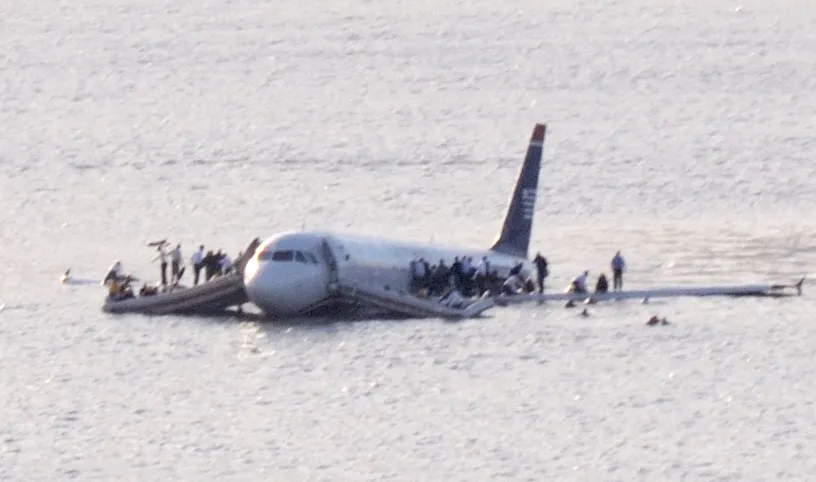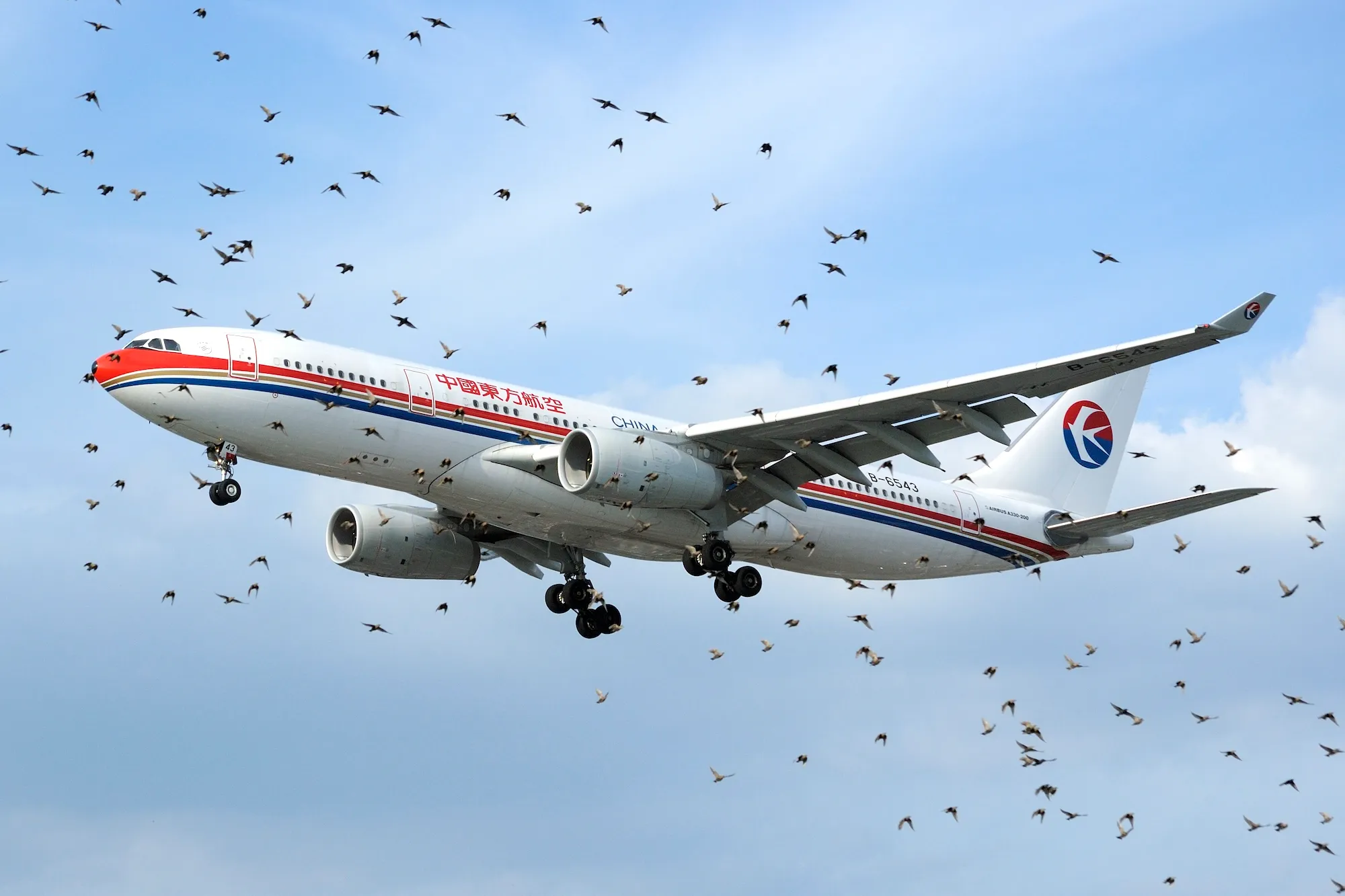DALLAS — Jet engines are designed to withstand some of the most rigorous flight conditions thrown their way, from sub-zero temperatures at 35,000 feet altitude to drawing in rain, hail, and volcanic ash. New engines must fly under the utmost stress with absolutely flawless performance.
Perhaps most unpredictable of all threats, however, are bird strikes and aircraft/bird collisions that can readily harm engines or airframes. While most impact transit safely, experience has shown that a few seconds of contact can define the fine line between safe touchdown and catastrophe.
To ensure that, no matter the shock of the unexpected, performance and safety must never be compromised; each qualified engine is subjected to rigorous bird strike testing.
The Reality of Bird Strikes
Bird strikes happen when aircraft crash into birds during takeoff, landing, or low flying. Although they occur most of the time below 3,000 feet, where most of the birds fly, they can create the risk of damage to aircraft structure and engines. More than 17,000 bird strikes happen annually in the United States alone, as reported by the U.S. Federal Aviation Administration (FAA).
Globally, the incidents cost the airline industry more than a billion USD annually in repair, delay, and operating disruption.
The vast majority of bird strikes inflict no significant or negligible damage. However, when collisions involve large birds or flocks of birds, the results are substantial. Collision energy rises by the square of the speeds, such that a 3.6 kg bird into an aircraft moving at 250 knots imparts in excess of 25 tons of force on collision.
On a rotor spinning in thousands of revolutions per minute, even small fragments will cause escalating mechanical breakdown.

The Certification Structure
As protection against these threats, civil aviation authorities such as the FAA and the European Union Aviation Safety Agency (EASA) established precise certification standards. These requirements are primarily outlined in 14 CFR Part 33.77 (for engines) and EASA CS-E 800, which mandate that manufacturers demonstrate that engines can withstand bird ingestion without fail.
Certification testing for bird ingestion targets particular parameters by bird type, weight, and test case. As small birds weighing about 0.85 kg, up to 16 ingestion tests are conducted to verify that the engine doesn't completely fail but continues to generate declining thrust for 20 minutes.
Medium bird tests, involving birds of approximately 1.15 kg and up to seven ingestions, require the engine to produce at least 20 minutes of usable thrust. Large birds, defined as those weighing between 1.8 and 3.65 kg in a single ingestion case, necessitate that the engine experiences no fire or uncontained failure and maintains 50% thrust for 14 minutes post-impact.
These test requirements depend on the design of the engine and the inlet area and take place in takeoff conditions, when maximum thrust occurs, and when the engine is most at risk from being struck by birds.
The Testing Process
The bird strike test is conducted with specially crafted test facilities within highly regulated environments. The most characteristic feature is the pneumatic launcher, also known as the bird cannon, which propels gelatin projectiles at high velocities into a propelling jet engine. The surrogate "birds" reproduce the weight and density of real bird tissues but provide consistent, moral, and repeatable tests.
The engines operate at takeoff power during testing, with rotation speeds of more than 10,000 RPM. The aircraft is accelerated into the fan blades at speeds of 150–800 knots. The goal is not to prevent damage, but to ensure the engine's damage containment ability can withstand the blow without resulting in fire, uncontained blade release, or a fast shutdown.
The strain gauges, high-speed cameras, and data acquisition systems all capture every millisecond of the crash. The engineers examine vibration patterns, deformation of the blades, and core performance to ensure that they meet certification standards.
Photo: Canon Setup
Blade Containment, Material Science
One of the key results of these tests is validation of the blade containment engine's capability of keeping fractured fan blades inside the casing. It is significant because in the case of an uncontained failure, high-speed debris would puncture through the fuselage or the fuel tanks.
New engines also include Kevlar-reinforced containment rings and composite fan blades engineered for durability and toughness. These materials attenuate impactive energy and seal up shrapnel from exiting the nacelle. Rolls-Royce, GE Aerospace, and Pratt & Whitney all invested heavily in new composite blade designs, swapping lightweight efficiency for durability.
Blade-off testing complements bird strike tests. During these tests, a turbine or fan blade is deliberately shattered while operating at operating speed to ensure that the casing contains the resulting debris. The outcome of these tests is to ensure that the damage done stays inside the engine.

Real-World Incident: US Airways Flight 1549
The “Miracle on the Hudson” was a real incident that happened to US Airways flight 1549 in 2009 when several Canada geese, as heavy as 4.5 kg each, were pulled into both CFM56 engines of an A320 shortly after takeoff from New York–LaGuardia (LGA). The combined loss of power required an emergency ditch in the Hudson River.
The accident prompted regulators and engine manufacturers to increase testing for multiple-bird ingestion and review the containment capabilities of high-bypass turbofans.
Integrating with Engine Development
The bird strike test is one element of a larger engine qualification process, including endurance, ice, water, and debris ingestion tests, all of which aim to test the engine's durability in a range of operating stresses. Endurance tests assess reliability over 150+ hours in various power settings, whereas the ice ingestion test evaluates anti-icing systems by inserting ice grains into a spinning engine.
The water ingestion test examines performance with heavy rain using high-speed sprays of water, and the debris ingestion test replicates the effects of runway debris, such as sand or gravel. Bird strike tests, by contrast, employ gelatin bullets shot at speeds of 150-800 knots to mimic bird strikes.
These tests take place in specialized outdoor test facilities and test cells by manufacturers including GE, Rolls-Royce, and Pratt & Whitney, with engines instrumented with hundreds of sensors to capture data in more stressful circumstances than actual in-flight operations.
Certification, Regulation
The FAA and the EASA regulate bird strike certification by direct observation, verification of data, and iterative test cycles. Regulators specify that an engine's performance after a bird strike must exhibit controlled thrust reduction, steady run, and no uncontained failure.
The certification process spans several years, involving the entry and alteration of various data points in each test to achieve better results. Once all requirements are met, the manufacturer issues and awards a Type Certificate (TC) that validates that particular type of engine has met all needed testing and standards.
Even after this certificate, OEMs still manage and maintain the airworthiness of their products. Real-world in-service engine data of airline fleets is also monitored for abnormalities, ensuring long-term reliability and conformity.
Advancements with Bird Strikes
As air travel is one of the world's largest industries, if not the largest, it results in more aircraft taking off and landing than ever before. This rapid increase in flights has prompted manufacturers and airport authorities to utilize highly advanced technologies to mitigate bird strike threats near the airfield.
Radar systems at several major international airports in Europe and the US provide live bird activity data across runways, which authorities prepare for well in advance of any significant threat. Laser and acoustic deterrents help divert birds from critical flight phases and paths, such as climb and approach, where engine or structural damage can lead to a mishap. Furthermore, with AI on the rise, the use of predictive AI simulation also makes it easier to observe potential bird activities.
On the design side, computer simulations of digital twins now allow virtual prototype modeling of bird ingestion events, minimizing the need for extensive real-world prototype testing, saving money, and refining safety judgments more accurately.

Beyond Compliance: Going for Resilience
The engines in service today are not only certified to minimum specs but also engineered to exceed them. Implementation of high-strength composites, advanced containment technologies, and real-time health monitor systems significantly reduced the risk of catastrophic engine failure.
Even with thousands of daily flights, significant bird strike-engine events are exceedingly rare. This safety experience is a direct result of decades of collaborative engineering, testing, and regulation. The "engineered-for-the-unexpected" mantra ensures that when the unthinkable happens, all aircraft will safely continue flight and landing.
Conclusion
The jet engines are among the most sophisticated artificial machines, and they can transform thousands of tons of air into thrust with accuracy. Their real strength, however, is not that they are about performance but about ruggedness. Bird strike testing is the aviation sector's relentless commitment to safety, and it asks engines to withstand the most unpredictable of flight conditions.
From early prototype ground-testing to full-size certification, every engine undergoes stress-testing well beyond its limits in lab settings before it ever lifts passengers into the air. Crises like Flight 1549's Hudson River splashdown help answer why such rigor happens and why it continues to expand.
Safety in aviation is never presumed; it is considered, validated, and substantiated.



.webp)
